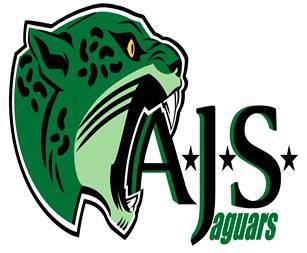Smudging Guideiline (HRCE)
Mi'kmaq Aboriginal Smudging Guidelines
Contents
• Purpose and Audience
• Guiding Principles
• Related Policies and Guidelines
• Roles and Responsibilities
• Background
• Guidelines
• Smudging in Special Circumstances
• Frequently Asked Questions (FAQs)
• Appendix A: Parental Consent Form
• Sources and Resources.
Purpose and Audience
These guidelines provide principals with information and necessary steps when considering the practice of smudging within the Halifax Regional School Board (HRSB).
Guiding Principles
Halifax Regional School Board recognizes and respects the wide variety of traditions and cultural observations of students and staff within its board. Smudging is a tradition common to many First Nation People which involves the burning of one or more medicines gathered from the Earth such as sweet grass, sage, cedar or juniper and/or tobacco. Smudging can be part of any First Nation ceremony and may be part of a daily personal spiritual cleansing. Developing guidelines to support smudging by students and staff further supports the HRSB Strategic Goals:
• Strategic Goal 3 – To achieve equitable learning opportunities -for all students (support and enhance every school’s ability to ensure that all students experience a learning environment that meets their needs for physical, social and emotional safety) and
• Strategic Goal 4 – to build engagement, support and confidence in HRSB.
Related Policies and Guidelines
For related information, see the following policies:
• Fire Safety F.005
• Tobacco- Free Schools and Workplaces A.006
• Smoke Free Places Act of Nova Scotia http://novascotia.ca/dhw/healthy-communities/smoke-free-places-act.asp
Roles and Responsibilities
These smudging guidelines describe specific roles and responsibilities for the principal, the School Administration Supervisor, and any staff designated by the principal who may interact with those involved in smudging.
Background
As written in Routes to Your Roots – the Mi’kmaq http://www.novascotia.com/en/home/discovernovascotia/history/routestoyourroots/settlementpatterns/themikmaq.aspx “Smudging ceremonies cleanse hearts and thoughts, and open minds to accept and respect diversity and change. The seven sacred prayers accompany a sweet grass ceremony to give thanks for the gift of life and all that is provided. These practices often open meetings and celebrations at both native and non-native venues throughout the province.”
Smudging is led by a person who has respect for the sacredness of the smudging ceremony and understanding of the reasons it is used in the First Nation culture. That person may be an Elder or cultural teacher who has been invited in to the school; it can be a staff person, a parent/guardian or student. Smudging should done respecting the scent sensitivities of others and be an important part of the acknowledgement of Mi’kmaq and Aboriginal culture.
The provisions of the Smoke Free Places Act of Nova Scotia http://novascotia.ca/dhw/healthy-communities/smoke-free-places-act.asp are not applicable to smudging when tobacco is not used, but also because subsection 3(2) of the Act reads “Nothing in this Act affects the rights of aboriginal people respecting traditional aboriginal spiritual or cultural practices or ceremonies.”
Guidelines
• Generally, smudging is to be conducted outside.
• Tobacco used as a sacred medicine is different than tobacco used recreationally. Only traditional ceremonial tobacco is used as part of a smudging ceremony.
• In introducing the tradition of smudging, participants will be provided with an explanation of smudging, the medicines and the teachings.
• The practice of smudging will be approved by the School Principal in consultation with the appropriate School Administration Supervisor.
• Appropriate signage will be provided designating the location as a smudging site. (see Appendix C)
• Individual students may request to smudge during the school day with parental consent. Parental consent is also required when smudging is part of a class lesson or small group activity (see attached consent forms).
• Smudging ceremonies hosted as part of a large event are exempt from individual parental consent. The school principal is to notify school staff and parents/guardians in advance through standard school communication methods.
• For schools that do not have a Mi’kmaq Aboriginal Student Support Worker, please contact the School Administration Supervisor and where possible, a Mi’kmaq Aboriginal Student Support Worker will work with school staff to help facilitate support and understanding of smudging at the school site.
Smudging in special circumstances
Smudging, as part of a school program within a school building, may be permitted when the following steps are followed:
• Approval from the School Principal in consultation with the School Administration Supervisor.
• School Administration Supervisor will work with the Regional Operations Manager to ensure compliance with fire regulations.
• Notification 24 – 48 hours in advance of the event to all staff and students within the school building (this allows for any persons with scent sensitivities to be aware of the ceremony).
• Signage is to be posted on the door of the room where the ceremony is taking place to ensure that all occupants of the building are aware that the ceremony is happening. This prevents interruptions or the inadvertent calling of the fire department due to the smell of smoke in the building.
• Signage is to be removed from the door once the aroma of the smudge has dissipated.
